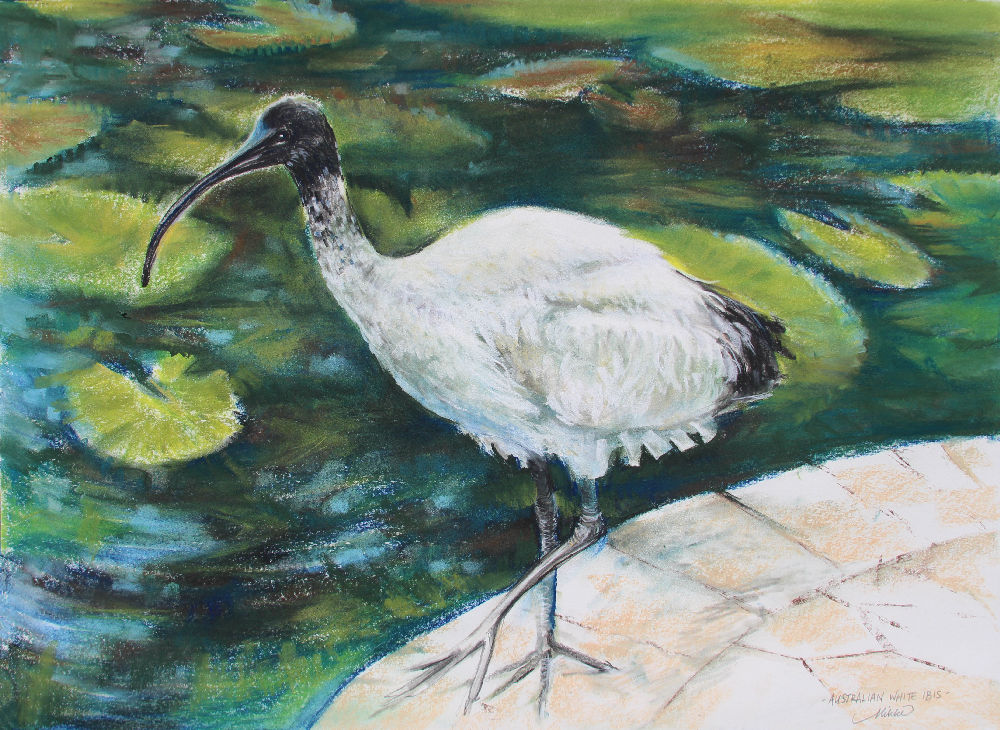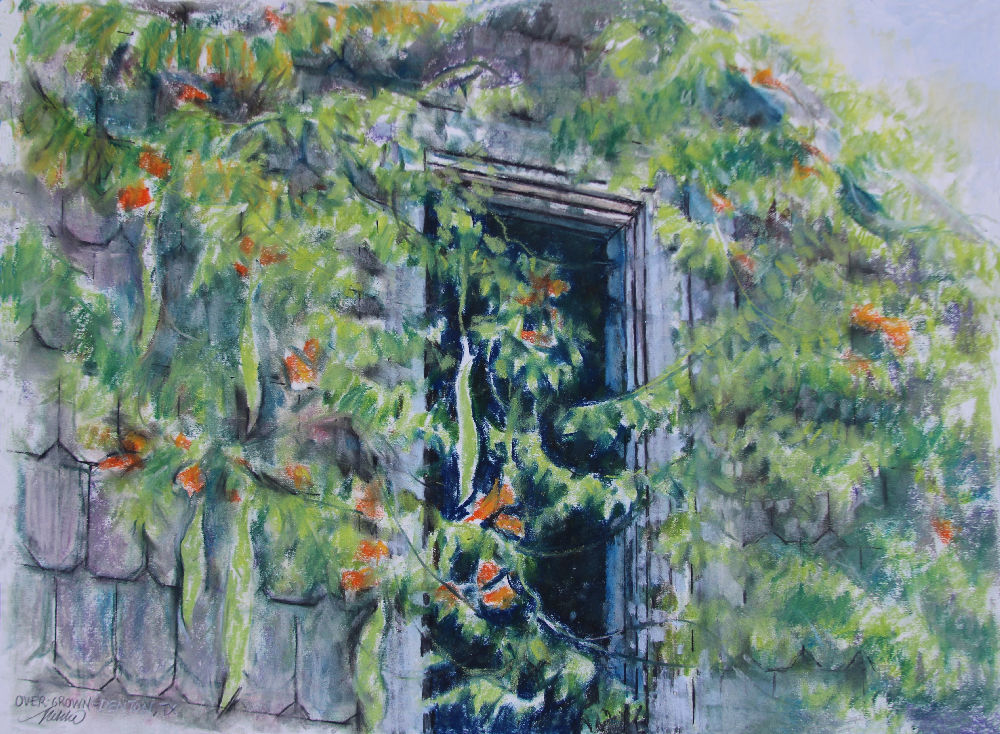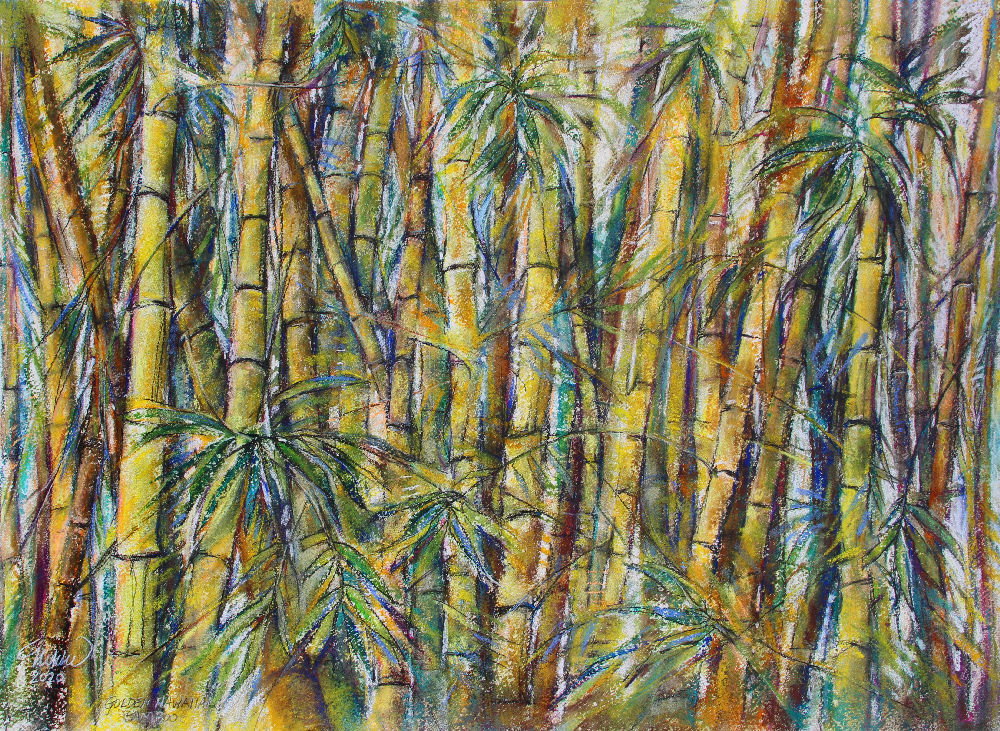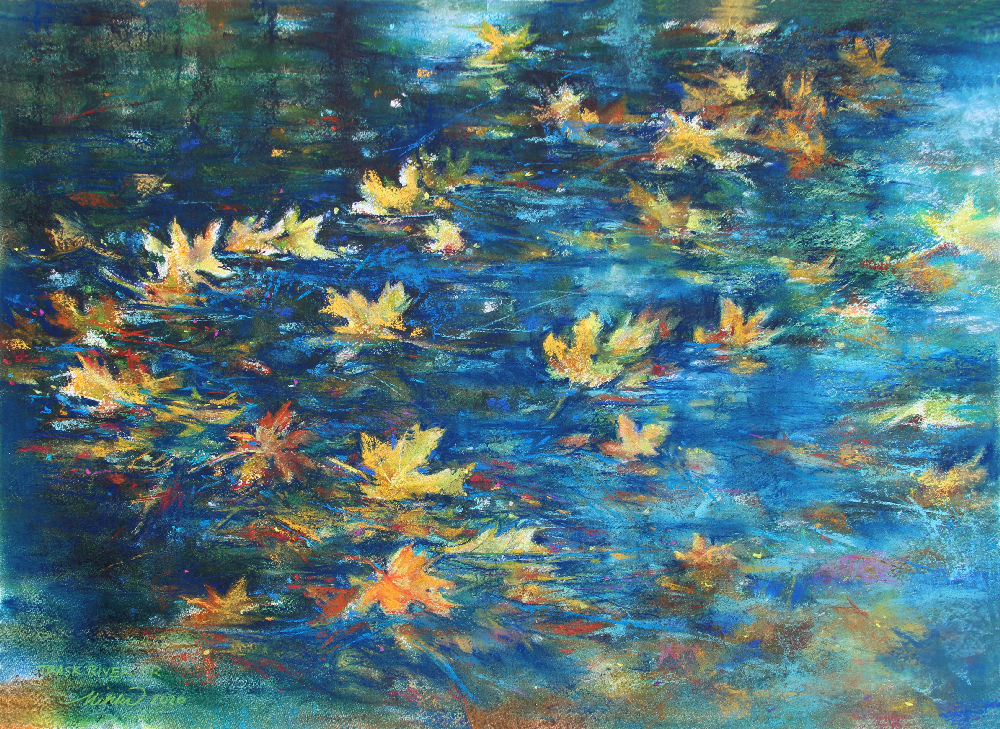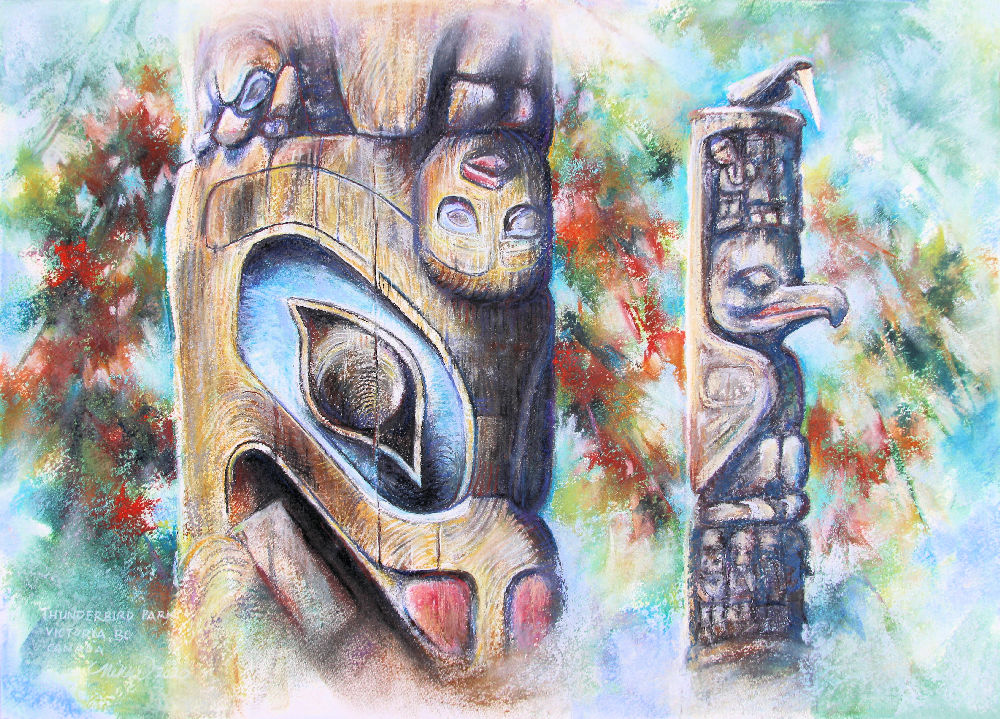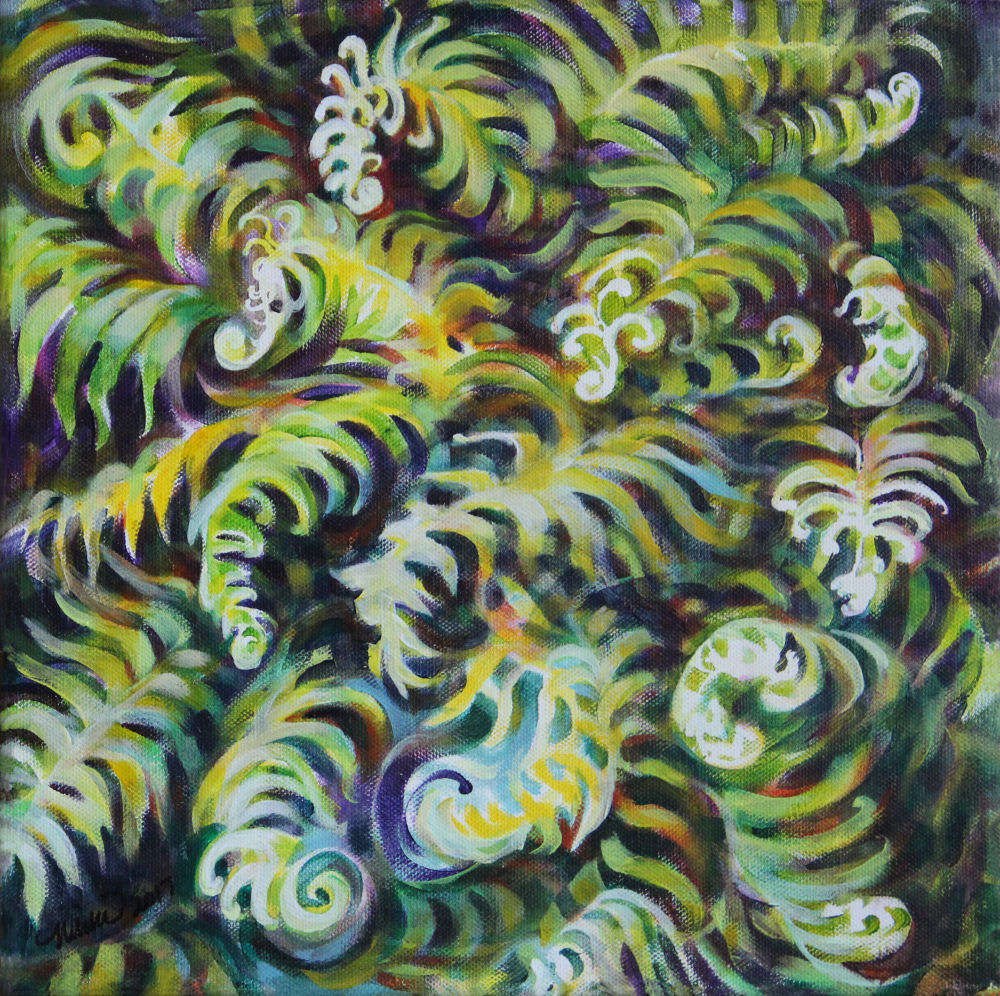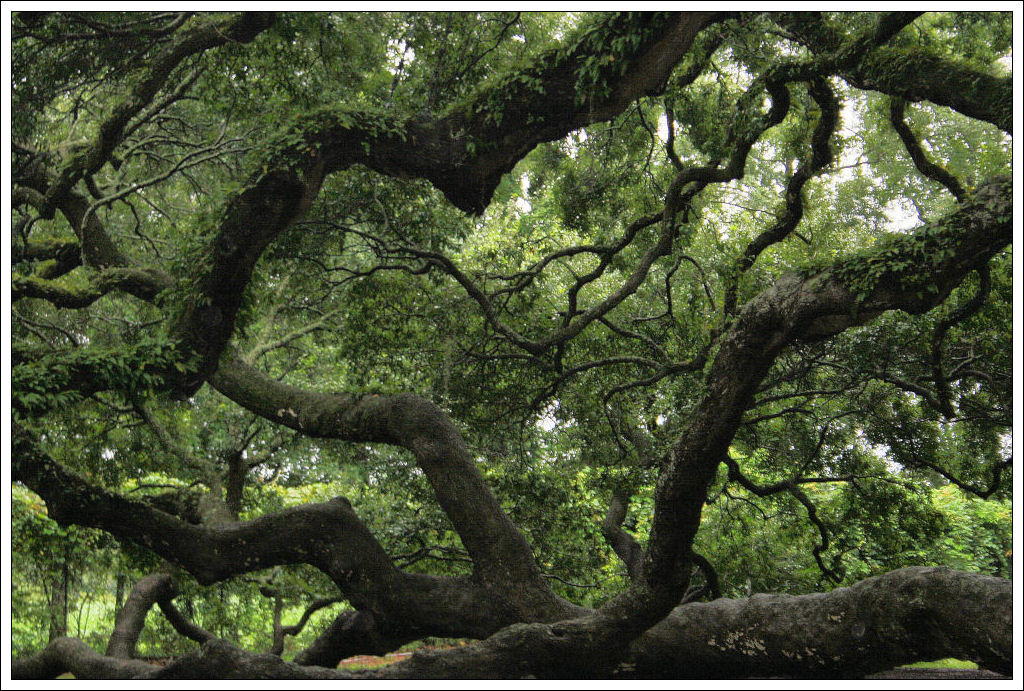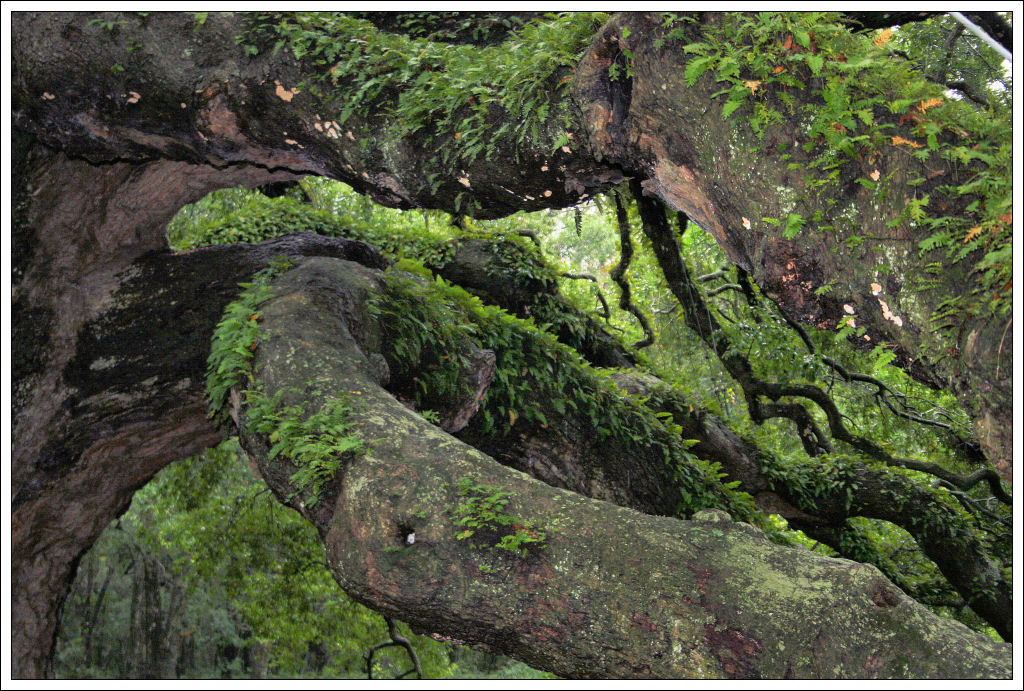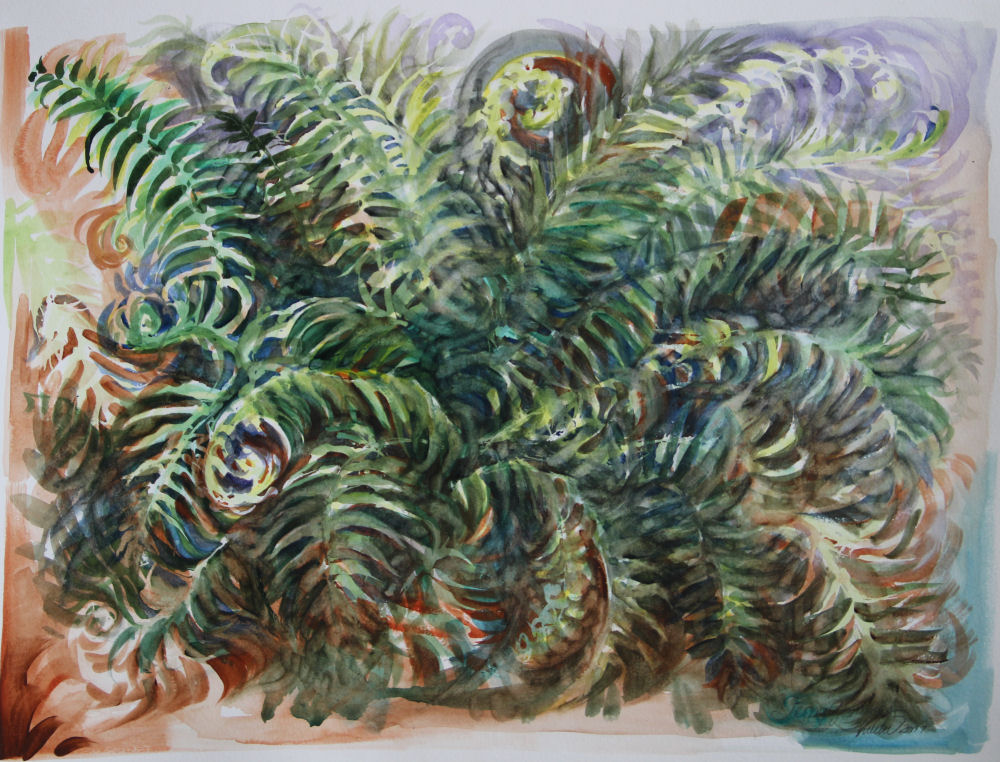leaves
« Previous Entries Next Entries »Australian White Ibis
Wednesday, October 28th, 2020
Australian White Ibis, Brisbane city Botanic Gardens, 18H x 24W inches soft pastels on paper
Sunflowers
Monday, October 19th, 2020
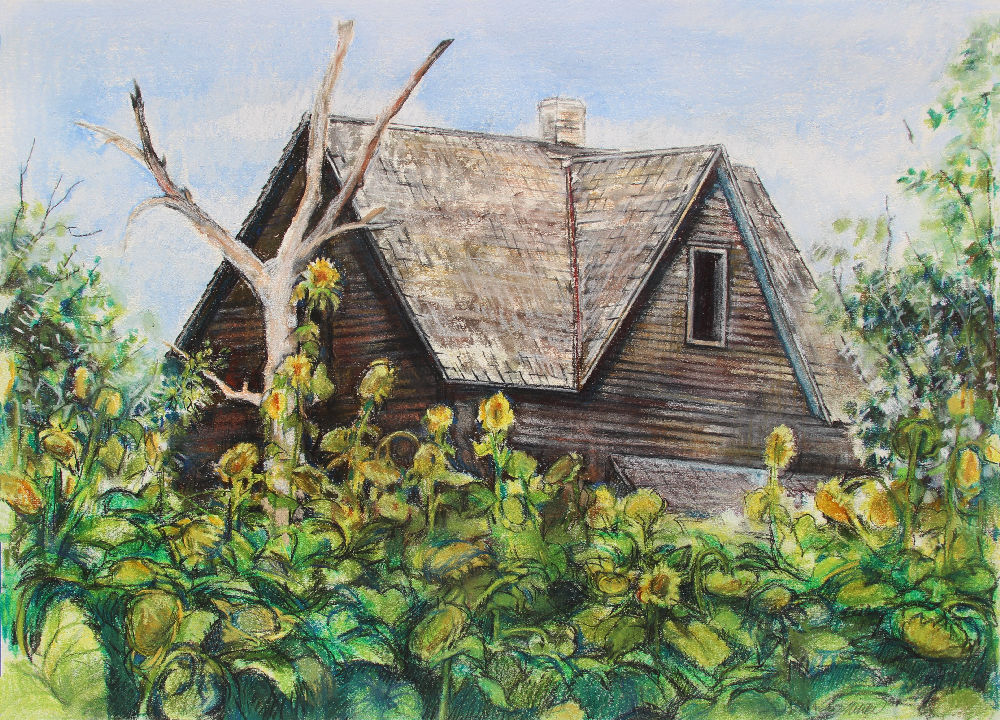
Sunflowers and an abandoned homestead in Nebraska, 18H x 24W inches soft pastels on 90 lb cold pressed watercolor paper.
Overgrown
Monday, October 5th, 2020
Overgrown in Denton, TX, this old building is now torn down – 18H x 24W inches soft pastels on 90 lb watercolor paper.
Golden Hawaiian Bamboo
Tuesday, September 8th, 2020
Golden Hawaiian Bamboo, Foster Botanical Garden, Honolulu, Hawaii – 18H x 24W inches soft pastels on paper
Trask River, Tillimook OR
Monday, August 31st, 2020
Trask River, Tillimook OR – 18H x 24W inches soft pastel on paper. Framed size 27H x 33W inches, white wood frame, crackle finish.
Thunderbird Park Totems
Wednesday, August 19th, 2020
Thunderbird Park Totems, Victoria BC, Canada – 18H x 24W inches soft pastels on paper, framed size 27H x 33W”.
Fern Song
Tuesday, February 4th, 2020
Fern Song, 12 x 12 inches acrylics on canvas

Honorable Mention, In Full Bloom online exhibition February 7 – March 7, 2020, J. Mane Gallery
The Angel Oak, South Carolina
Saturday, April 14th, 2018
This article and set of photos, initially written in 2008 and updated in 2018, honors the tireless efforts to halt construction on John’s Island, South Carolina that would have encroached on an area of land boasting the Oak tree estimated to be 400 to 500 years old. Thanks to conservation and other local groups like schools and churches, individual donors, pro-bono work from lawyers, a sizable grant, and numerous petitions, we are reassured that persistence does make a difference on this planet. The land surrounding the Angel Oak is no longer in jeopardy. Read more about this amazing tree.
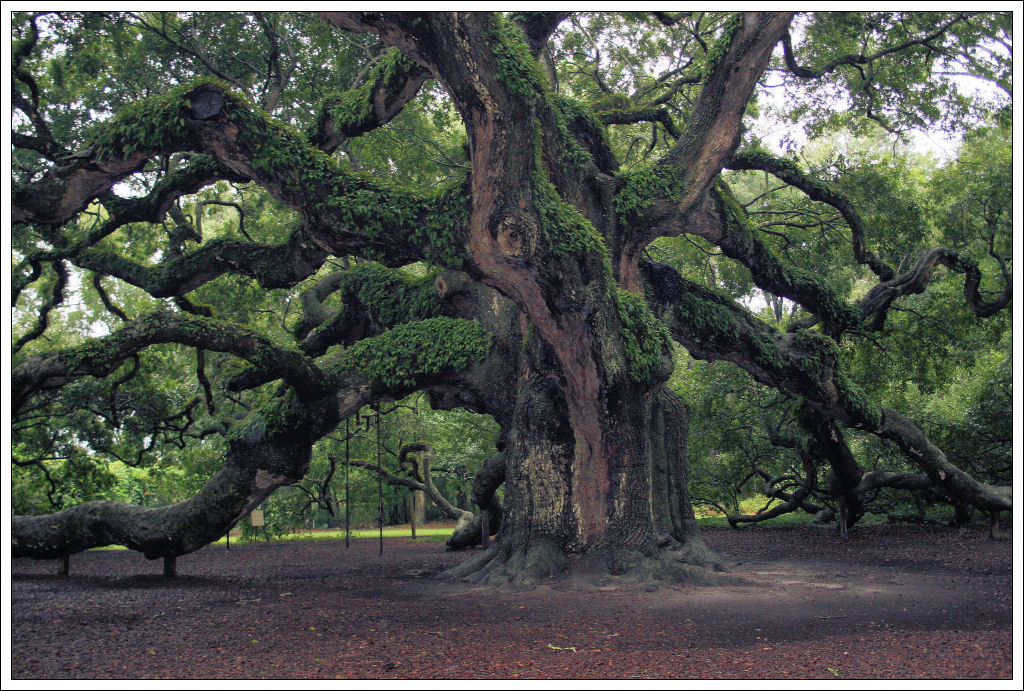 Charleston, SC is proud of its heritage and respected for its commitment to preserving history in the area, and after many years, residents were finally victorious over plans that would have cut down nearby trees and forest in favor of land development.
Charleston, SC is proud of its heritage and respected for its commitment to preserving history in the area, and after many years, residents were finally victorious over plans that would have cut down nearby trees and forest in favor of land development.
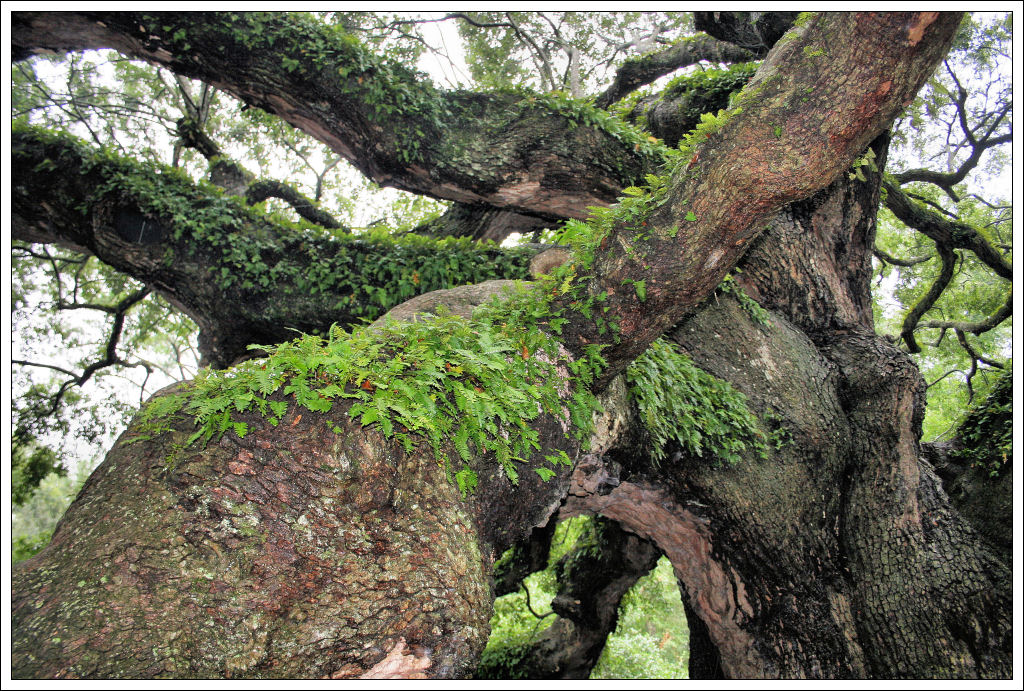 In one 2008 online petition there were hundreds of pages of interesting comments and pleas from residents who have fond memories of climbing the branches as children, plus exclamations written by tourists – national and international – who have visited the area specifically to see the Angel Oak. The tree is so significant to locals, a nearby elementary school carries its name. Picnics, weddings and reunions are held in the Angel Oak Park, including an annual summer Arts event, “Evening under Angel Oak” featuring live music, drama and other activities.
In one 2008 online petition there were hundreds of pages of interesting comments and pleas from residents who have fond memories of climbing the branches as children, plus exclamations written by tourists – national and international – who have visited the area specifically to see the Angel Oak. The tree is so significant to locals, a nearby elementary school carries its name. Picnics, weddings and reunions are held in the Angel Oak Park, including an annual summer Arts event, “Evening under Angel Oak” featuring live music, drama and other activities.
 During August, 2008 my husband and I drove through South Carolina and took a short detour to John’s Island. We drove through wicked rains at the edge of Tropical storm Faye, so when we arrived at Angel Oak Park no one else was there. Although the light was not ideal, fortunately rain subsided long enough to take photos.
During August, 2008 my husband and I drove through South Carolina and took a short detour to John’s Island. We drove through wicked rains at the edge of Tropical storm Faye, so when we arrived at Angel Oak Park no one else was there. Although the light was not ideal, fortunately rain subsided long enough to take photos.
This is one impressive tree! The trunk and lower branches are so immense, they have been propped up with stakes and heavy cables here and there, which is a little intrusive when taking photos, but obviously necessary. Growth is spread outward more than upward. No wonder it is considered sacred by the locals… there is an appreciable presence felt while standing silently under its canopy, which apparently occupies 2,000 yards of space above.
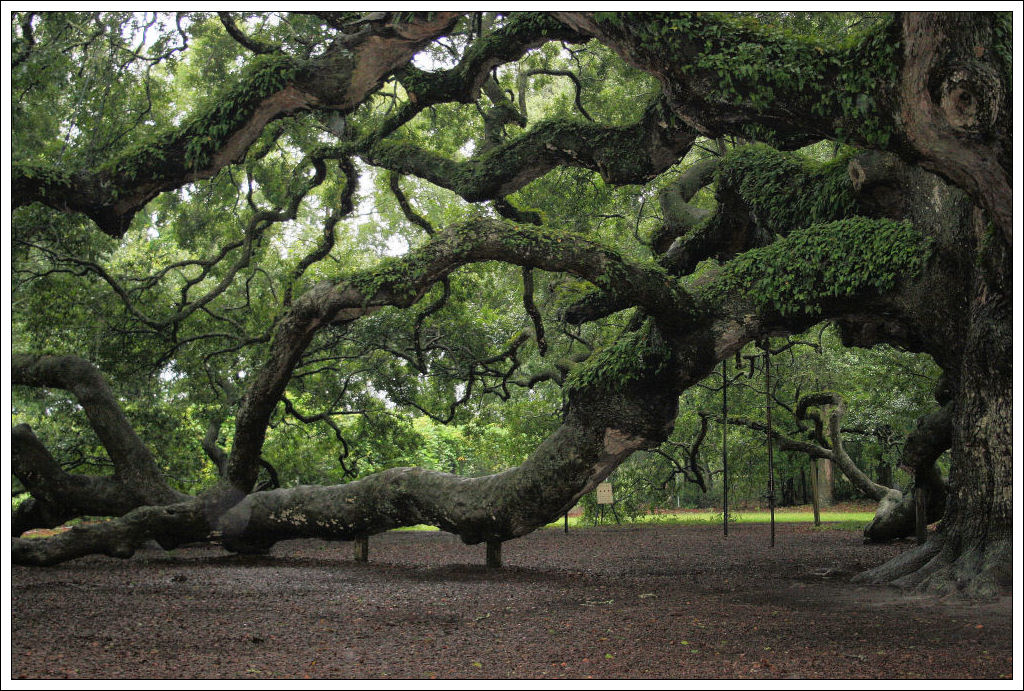 It occurred to me that this tree has lived through one serious chunk of history, and I wondered what was happening on our planet when it was knee-high to an acorn? The Angel Oak’s parent-tree and surrounding forest flourishes for eons before one special acorn falls from one of the magnificent Oaks on the southeastern shores of a land only known to the indigenous peoples then. The acorn sprouts along with many others, but this one will outlive the rest, seasoning hurricanes, climate changes, human encroachment and wars.
It occurred to me that this tree has lived through one serious chunk of history, and I wondered what was happening on our planet when it was knee-high to an acorn? The Angel Oak’s parent-tree and surrounding forest flourishes for eons before one special acorn falls from one of the magnificent Oaks on the southeastern shores of a land only known to the indigenous peoples then. The acorn sprouts along with many others, but this one will outlive the rest, seasoning hurricanes, climate changes, human encroachment and wars.
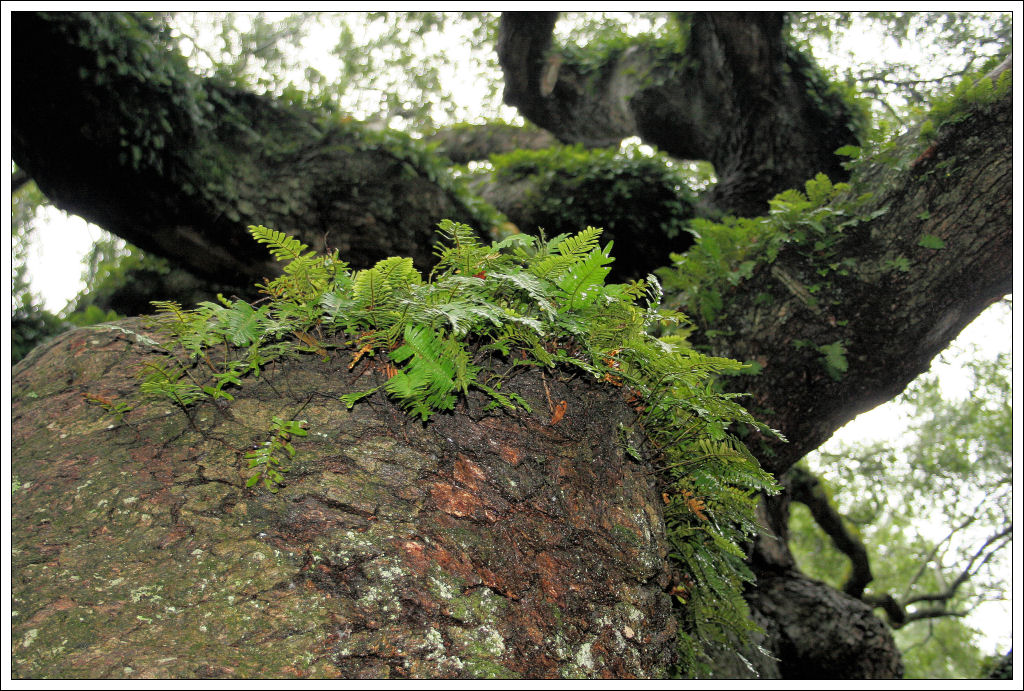 Much of what we are familiar with; our collective modern identity has been shaped by the events and people who lived and died since the Angel Oak established its first roots in the earth. If trees could talk…!
Much of what we are familiar with; our collective modern identity has been shaped by the events and people who lived and died since the Angel Oak established its first roots in the earth. If trees could talk…!
The Angel Oak does not exist on its own. It depends on the surrounding forest, so any deliberate disturbance in the immediate soil or neighboring properties would disrupt its far-reaching and delicate root system. Thankfully, now the tree will remain host to a myriad of life forms, supporting an abundant, specialized ecosystem of mosses, fungi and fern varieties, insects and amphibians – hopefully for five hundred more years. The Angel oak lives on as one of the true jewels on this planet.
While older, poorer quality photos are still gradually being replaced, the Majesty of Trees / Dancing with Trees exhibition website is now updated. Check it out!
First Snow 02
Saturday, June 3rd, 2017
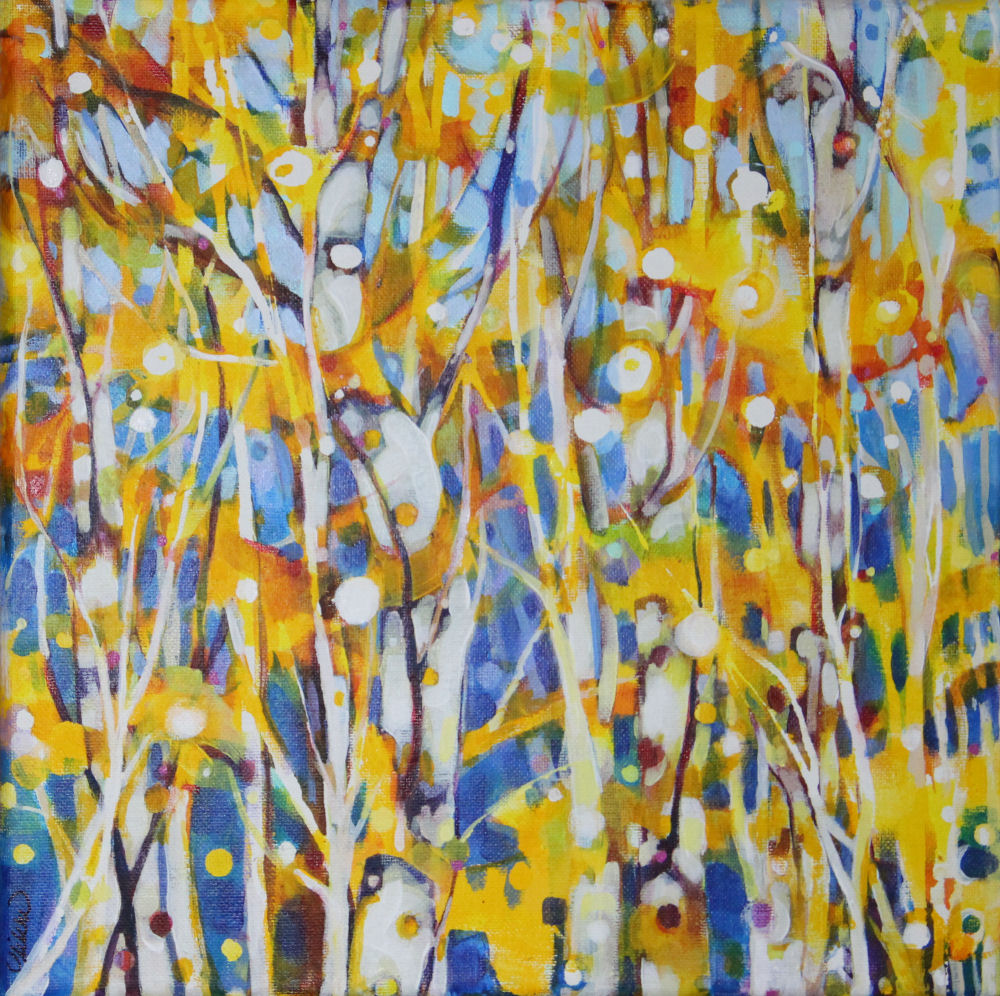
First Snow 02, 12 x 12 inches acrylics on canvas
Entry for The Square Foot Show in Bismark, ND on August 1st – 25th, 2017
Sold, but a similar one can be created upon request. Please allow 7 days to paint before shipping.
Fern Gestures
Wednesday, March 1st, 2017
Fern Gestures, 14H x 20W inches watercolors on 140 lb. cold pressed. 20H x 26W inches white mat, white wood frame with crackle finish.
« Previous Entries Next Entries »

